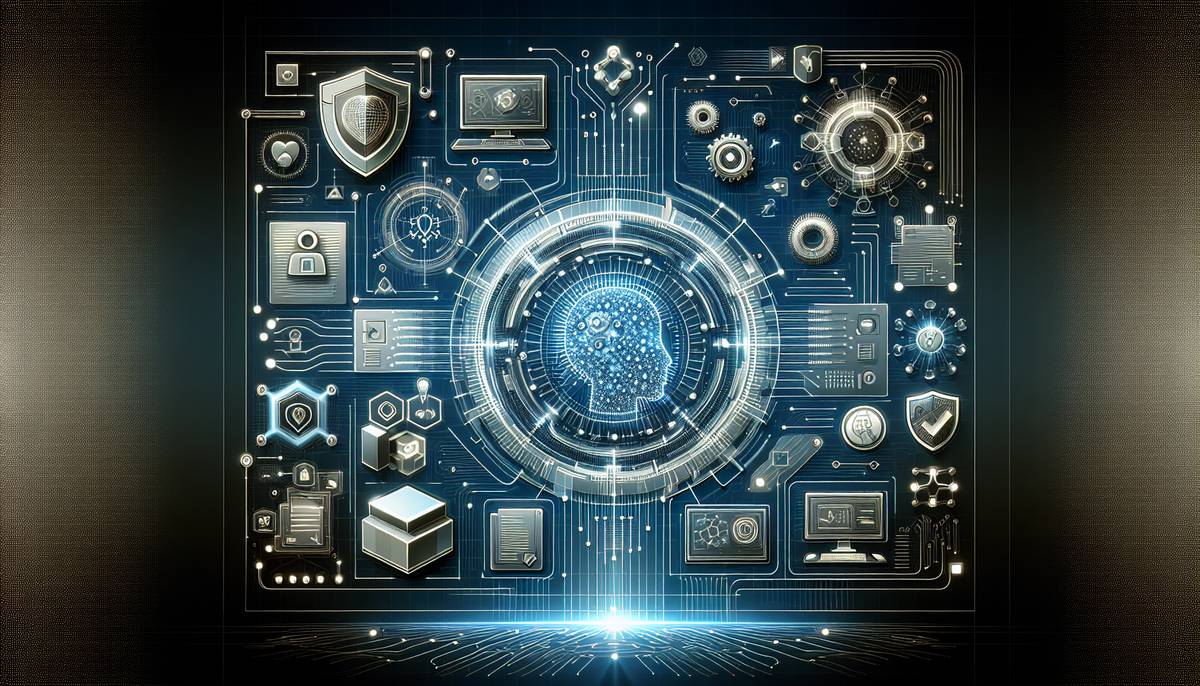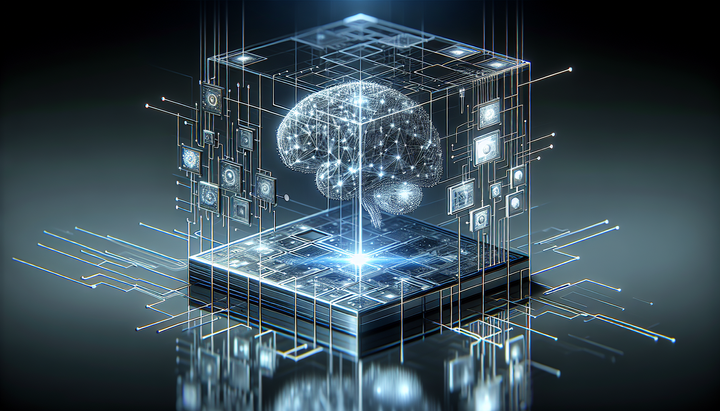Decentralized AI: Revolutionizing Cybersecurity at the Edge?

The Rise of Decentralized AI in Cybersecurity
In today’s rapidly evolving digital landscape, cybersecurity is more critical than ever. As cyber threats grow in sophistication and frequency, traditional centralized defenses are increasingly being outsmarted by attackers. This emerging crisis has catalyzed the development of innovative security measures, chief among them being decentralized AI. By leveraging the distributed power of network edge devices, decentralized AI is paving the way for advanced, real-time protection that is adaptable, efficient, and inherently more secure.
Decentralized AI minimizes reliance on vulnerable central servers by processing data closer to its source. This not only reduces the risk of large-scale breaches but also enhances response times, making it possible to counter threats as they emerge. With the integration of cutting-edge technologies like 5G edge networks and neuromorphic computing, the landscape of digital security is undergoing a transformative shift.
Understanding Decentralized AI
Decentralized AI refers to a network architecture where intelligence is distributed across multiple nodes rather than concentrated in a centralized data center. This model offers several advantages:
- Enhanced Security: With data processed locally, the system is less prone to attacks that target centralized data stores.
- Lower Latency: Real-time decision-making becomes feasible as data does not need to travel long distances to be analyzed.
- Scalability: Distributed systems can handle increased loads without the bottlenecks of traditional centralized systems.
As cybersecurity threats evolve, relying solely on centralized systems is no longer viable. Decentralized AI enables a robust, adaptive defense mechanism that learns and evolves continuously, matching the dynamic nature of modern cyber threats.
The Role of 5G Edge Networks and Neuromorphic Computing
5G edge networks and neuromorphic computing are two technologies that enhance the potency of decentralized AI. 5G edge networks provide the high-speed, low-latency connectivity required for real-time data processing. This connectivity ensures that even remote devices can contribute to and benefit from a distributed AI ecosystem.
Neuromorphic computing takes inspiration from the human brain, using artificial neurons and synapses to create energy-efficient chip architectures. These systems excel at complex tasks like pattern recognition and anomaly detection while consuming a fraction of the power of standard computing architectures. When combined with decentralized AI, neuromorphic chips enable a nuanced analysis of vast streams of data, detecting subtle threats that might otherwise go unnoticed.
Breaking Down the Technology: Key Components and Benefits
The marriage between decentralized AI, 5G edge networks, and neuromorphic computing is multifaceted. Here’s how:
- Decentralized Data Processing: Information is analyzed at the network edge, reducing the risk of data interception during transmission.
- Instantaneous Threat Detection: With high-speed 5G connectivity, anomalies can be identified and countered in real time.
- Energy Efficiency: Neuromorphic systems mirror the human brain to process data with minimal energy, making continuous operation viable even in resource-constrained environments.
- Adaptive Learning: Distributed AI learns dynamically from local data. This persistent evolution means security systems stay one step ahead of emerging threats.
- System Robustness: Spreading the workload across multiple nodes reduces the risk of a single point of failure, increasing overall system resilience.
Industry Impact and Use Cases
Several industries have begun incorporating decentralized AI into their cybersecurity strategies. In the financial sector, for example, banks and payment processors face constant threats from sophisticated cyber criminals aiming to exploit centralized databases. By employing decentralized AI, these institutions can monitor financial transactions in real time, instantly flagging unusual behavior and mitigating risks proactively.
The healthcare industry is another prime candidate for such technology. With patient records increasingly stored digitally and remote monitoring becoming common, the risk associated with data breaches has soared. Decentralized AI safeguards sensitive medical data by processing and analyzing it at the network edge, ensuring that vulnerabilities in a single location do not compromise the entire health system.
Retail and e-commerce also benefit significantly. Cyberattacks targeting online platforms have grown in both scale and complexity. Decentralized AI helps secure these platforms by distributing security protocols over multiple nodes, ensuring that an attack on one part of the network does not paralyze the entire system. This level of resilience is crucial to maintaining consumer trust and continuity in service.
Expert Opinions and Emerging Trends
Technology experts and researchers from institutions such as IEEE, MIT Tech Review, and Arxiv are increasingly advocating for decentralized AI as a cornerstone of next-generation cybersecurity. Experts argue that decentralization not only minimizes vulnerabilities associated with centralized data storage but also leverages the collective processing power of connected devices—a critical advantage in today’s fast-paced digital environment.
An industry whitepaper from a leading cybersecurity firm noted, "Decentralized AI transforms the traditional security paradigm by distributing both data and risk across multiple nodes. This model not only improves detection accuracy but also facilitates rapid, localized responses to threats." Such insights reinforce a growing consensus among experts that decentralized architectures are essential for building secure, future-proof digital infrastructures.
Furthermore, as emerging technologies like blockchain-based IoT security and post-quantum cryptography begin to mature, they promise to complement decentralized AI. This synergistic approach could lead to multi-layered defense systems capable of thwarting a wide variety of cyber threats, from sophisticated state-sponsored attacks to rapidly evolving malware.
Challenges and Considerations in Implementation
While the promise of decentralized AI is immense, its implementation comes with its own set of challenges. One significant issue is interoperability. With an array of devices and systems operating at the edge, ensuring seamless communication and unified security protocols is complex. Ongoing standardization efforts aim to address these challenges, but until they are fully implemented, organizations must navigate a fragmented landscape of hardware and software compatibility.
Data privacy and the integrity of distributed nodes also remain pressing concerns. Each node represents a potential point of vulnerability; if one device is compromised, it could potentially provide an access point to the broader network. As a result, developing robust encryption standards and secure communication channels is paramount. Research initiatives by agencies like NIST are actively exploring these challenges and proposing frameworks to mitigate such risks.
Additionally, there is the issue of cost. Transitioning from centralized systems to a decentralized architecture requires significant investment in both hardware and skill development. Although the long-term benefits include enhanced security and reduced downtime, the initial financial and logistical hurdles can be daunting for businesses. However, many experts argue that the potential savings from averting cyberattacks justify these initial expenditures.
Integrating Emerging Technologies for a Resilient Future
Looking forward, the integration of decentralized AI with other disruptive technologies holds extraordinary promise. For instance, when combined with blockchain-based IoT security, decentralized AI can offer immutable audit trails and secure, decentralized control over interconnected devices. Similarly, the progressive field of post-quantum cryptography is working toward developing encryption methods that will protect data even against the immense computational power of quantum computers.
There is also an emerging trend of using AI-generated programming to develop and maintain these systems. This can significantly reduce the time and cost involved in updating security protocols, ensuring that the decentralized network is constantly fortified against new types of cyber threats. Research collaborations between academia and industry are crucial at this stage, as they provide the rigorous testing grounds necessary to fine-tune these complex systems.
One of the most exciting prospects is the potential for edge AI processing to transform critical infrastructure. From smart grids and transportation networks to industrial IoT systems, decentralized AI can ensure that even large-scale operations benefit from rapid threat detection and localized response strategies. With ongoing developments backed by rigorous research and industry trials, the integration of these emerging technologies is set to redefine cybersecurity strategies globally.
Conclusion: A Secure Edge for a Decentralized Future
The convergence of decentralized AI, 5G edge networks, and neuromorphic computing is not just a fleeting trend—it represents a fundamental shift in cybersecurity. This integrated approach offers faster threat detection, enhanced data sovereignty, and an unprecedented level of resilience against cyberattacks. As industries across the board begin to harness these technologies, we can expect a more secure digital future built on a foundation of distributed, adaptive intelligence.
However, realizing this vision requires overcoming significant hurdles, including interoperability, data privacy risks, and initial implementation costs. Collaboration among technology companies, regulatory bodies, and research institutions will be essential to create unified standards and robust security frameworks that can protect decentralized AI ecosystems.
Ultimately, decentralized AI promises a future where cybersecurity is proactive and adaptive, rather than reactive and fragmented. By processing data at the edge and leveraging state-of-the-art technologies like 5G and neuromorphic computing, organizations can build defenses that are both resilient and forward-thinking. As we continue to witness rapid technological innovations, one thing is clear: the future of cybersecurity lies in embracing decentralization and fostering an ecosystem where intelligence is as distributed as the threats it must combat.
For businesses, governments, and technology enthusiasts alike, the move toward decentralized AI heralds a new era—one where advanced security measures are interwoven into the fabric of our digital lives. With continued investment and collaborative research, the promise of a secure, efficient, and adaptive cybersecurity infrastructure is well within reach.
- Case Study: A multinational bank deploys decentralized AI, drastically reducing fraud incidents.
- Research Highlight: IEEE and MIT collaborations reveal significant performance gains in edge-based threat detection.
- Expert Panel: Industry leaders discuss the future of neuromorphic computing in securing critical infrastructure.
Stay informed with the latest trends and expert insights as decentralized AI continues to evolve, promising a more resilient and secure digital era for everyone.



Comments ()